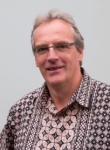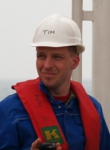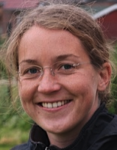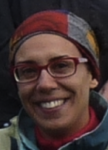 University of Bremen
University of Bremen
MARUM at the University of Bremen aims at understanding the role of the oceans in the Earth’s system by employing state-of-the-art methods. It examines the significance of the oceans within the framework of global change, quantifies interactions between the marine geosphere and biosphere, and provides information for sustainable use of the ocean. MARUM comprises the DFG research center and the cluster of excellence "The Ocean in the Earth System".
Within a multidisciplinary approach sedimentological, micropaleontological, microbiological, geochemical (organic and inorganic geochemistry; isotope geochemistry), geotechnical, geophysical (seismic, geomagnetic), mineralogical and modelling working groups at the MARUM cooperate within the major research fields “Ocean and Climate”, “Geosphere-Biosphere Interactions” and “Sediment Dynamics”.

With regard to cold-water coral research,
MARUM has participated / participates in several international projects: EU-funded ECOMOUND project (5th FRP), ESF-EuroMARGINS MOUNDFORCE project, EU-IP HERMES (6th FRP), EU-IP HERMIONE (6th FRP) and the ESF-EuroMARC CARBONATE project. Focal topics of MARUM's cold-water coral research have been the long-term development (glacial-interglacial time scales) of cold-water coral ecosystems and habitat/facies distributions in cold-water coral settings in relation to physical (mainly hydrodynamic) forcing factors. For the latter topic the availability of remotely operated vehicles (ROV) and manned submersibles are of crucial importance. Study areas comprise a number of coral sites along the NE Atlantic margin (Irish margin, Gulf of Cádiz, Mauritanian margin) and the Mediterranean Sea. MARUM organised or participated in various cruise expeditions to these areas (e.g., 2003: RV Sonne SO175 Gulf of Cádiz, 2004: RV Meteor M61-3 Irish margin, 2006: RV Meteor M70-1 central Mediterranean Sea, 2008: RV Pelagia 64PE284 Gulf of Cádiz, 2008: RV Celtic Explorer CE0810, 2009: RV Poseidon POS385 Alboran Sea, 2010: RV Poseidon POS400 Irish margin).
Facilities
The combination of modern analytical methods and sophisticated marine research technology contributes to the strength of the MARUM. Laboratory methods include scanning methods (XRF-scanner, Multi-Sensor-Core-Logger, CT-scanner), a variety of mass spectrometer and gas chromatography.
The MARUM operates two Remotely Operated Vehicles (ROV), the ROV Cherokee rated for 1000 m water depth and the ROV QUEST rated for 4000 m water depth. The Autonomous Underwater Vehicle (AUV) SEAL is rated for 5000 m water depth and mainly used for generating high resolution maps of the sea floor. MOVE is an autonomous moving lander for the investigation of processes at the sediment/water-interface. The sea floor drill rig MeBo was developed at the MARUM in order to get cores from soft sediments and hard rocks down to 70 m below the sea floor.
The Bremen Core Repository is one of the largest core repositories for marine cores in the world and is used by the Integrated Ocean Drilling Program IODP (
http://www.marum.de/en/IODP.html) and contains all cores recovered within the scientific drilling programs Deep Sea Drilling Program (DSDP), Ocean Drilling Program (ODP) and IODP that were drilled in the Arctic, Atlantic and Mediterranean Sea. The PANGEA Publishing Network for Geoscientific and Environmental Data (
http://www.pangaea.de/) and the World Data Center for Marine Environmental Sciences WDC-MARE (
http://www.wdc-mare.org/) are operated at MARUM in cooperation with the Alfred-Wegener-Institute for Polar and Marine Research (AWI) in Bremerhaven.
Related Projects
ESF CARBONATE - Mid Latitude Carbonate Systems: Complete Sequences From Cold Water Coral Carbonate Mounds in the NE Atlantic
CARBONATE is a 4-year integrated research programme (2007-2011) that is funded through the ESF EUROCORES: EuroMARC programme focusing on coral carbonate mound/reef core material obtained from sites along the European – North African margin comprising northern Norway, Ireland, Gulf of Cádiz and Mauritania.
First results within CARBONATE demonstrated that the development of cold-water coral carbonate mounds and reefs is driven by hydrodynamic and oceanographic processes. Not only do these processes supply sediment which forms a major component of the mounds, but they also supply and resuspended particulate organic matter which the corals fed. In this way, both the lithic and the carbonate components of the mound record are in tune with climatically-steered oceanographic changes.
CARBONATE has generated a number of key palaeoenvironmental records at intermediate water depths. Perhabs more importantly, for the first time, these coral carbonate mound palaeo-archives are placed along a latitudinal gradient from northern Norway (70°N) to Mauritania (16°N). In doing so, CARBONATE has defined cold-water coral palaeobiogeographical provinces suggesting that southern Europe and north Africa represent potential refugia for cold-water corals during glacial periods.
HERMIONE is a 3-year Collaborative Project (2009-2011) funded under the European Commission's Framework 7 programme. HERMIONE is the successor to the highly successful HERMES project, which finished in March 2009. It is designed to make a major advance in our knowledge of the functioning of deep-sea ecosystems and their contribution to the production of goods and services. This will be achieved through a highly interdisciplinary approach (including biologists, ecologists, microbiologists, biogeochemists, sedimentologists, physical oceanographers, modelers and socio-economists) that will integrate biodiversity, specific adaptions and biological capacity in the context of a wide range of highly vulnerable deep-sea habitats. Gaining this understanding is crucial, because these ecosystems are now being affected by climate change and impacted by man through fishing, resource extraction, seabed installations and pollution. To design and implement effective governance strategies and management plans we must understand the extent, natural dynamics and interconnection of ocean ecosystems and integrate socio-economic research with natural science.
HERMIONE study sites include the Arctic, North Atlantic and Mediterranean and cover a range of ecosystems including cold-water corals, canyons, cold and hot seeps, seamounts and open slopes and deep basins. The project will make strong connections between deep-sea science and user needs. HERMIONE will enhance the education and public perception of the deep-ocean issues through some of the major European aquaria. A major aim of the project is to create a platform for discussion between a range of stakeholders, and contribute to EU environmental policies.
People
|

|

|

|
|
Prof. Dr.
Dierk Hebbeln
|
Dr.
Claudia Wienberg
|
Dr.
Tim Freudenthal
|
 |
 |
 |
|
Dr.
Markus Eisele
|
Dr.
Hiske Fink
|
Dr.
Lelia Matos
|
Related Publications
2012
Fink HG, Wienberg C, Hebbeln D, McGregor HV, Schmiedl G, Taviani M, Freiwald A (2012). Oxygen control on Holocene cold-water coral development in the eastern Mediterranean Sea. Deep Sea Research Part I 62: 89-96.
Mienis F, De Stigter HC, De Haas H, Van der Land C, Van Weering TCE (accepted). Hydrodynamic conditions in a cold-water coral mound area on the Renard Ridge, southern Gulf of Cadiz. Journal of Marine Systems.
Mienis F, Duineveld GCA, Davies AJ, Ross SW, Seim H, Bane J, Van Weering TCE (2012). The influence of near-bed hydrodynamic conditions on cold-water corals in the Viosca Knoll area, Gulf of Mexico. Deep Sea Research Part I 60: 32-45.
2011
Eisele M, Frank N, Wienberg C, Hebbeln D, López Correa M, Douville E, Freiwald A (2011). Productivity controlled cold-water coral growth periods during the last glacial off Mauritania. Marine Geology 280: 143-149.
Frank N, Freiwald A, López Correa M, Wienberg C, Eisele M, Hebbeln D, Van Rooij D, Henriet JP, Colin C, van Weering T, de Haas H, Buhl-Mortensen P, Roberts JM, De Mol B, Douville E, Blamart D, Hatte C (2011). Northeastern Atlantic cold-water coral reefs and climate. Geology 39: 743-746.
Montero-Serrano J-C, Frank N, Colin C, Wienberg C, Eisele M (2011). The climate influence on the mid-depth east Atlantic gyres viewed by cold-water corals. Geophysical Research Letters 38, L19604, doi:10.1029/2011GL048733.
Thierens M, Pirlet H, Colin C, Latruwe K, Vanhaecke F, Lee J, Stuut, J-B, Titschack J, Huvenne V, Dorschel B, Wheeler AJ, Henriet J-P (in press). Ice-rafting from the British-Irish ice sheet since the earliest Pleistocene (2.6 million years ago): implications for long-term mid-latitudinal ice-sheet growth in the North Atlantic region. Quaternary Science Reviews, doi: 10.1016/j.quascirev.2010.12.020.
Van der Land C, Mienis F, De Haas H, De Stigter HC, Swennen R, Reijmer J JG, Van Weering TCE (2011). Paleo-redox fronts and their formation in carbonate mound sediments from the Rockall Trough. Marine Geology 284: 86-95.
Van Rooij D, Blamart D, De Mol L, Mienis F, Pirlet H, Wehrmann LM, Barbieri R, Maignien L, Templer SP, de Haas H, Hebbeln D, Frank N, Larmagnat S, Stadnitskaia A, Stivaletta N, van Weering T, Zhang Y, Hamoumi N, Cnudde V, Duyck P, Henriet J-P and the MiCROSYSTEMS MD 169 shipboard party (2011). Cold-water coral mounds on the Pen Duick Escarpment, Gulf of Cadiz: the MiCROSYSTEMS approach. Marine Geology 282: 102-117.
2010
Douville E, Sallé E, Frank N, Eisele M, Pons-Branchu E, Ayrault S (2010). Rapid and accurate U-Th dating of ancient carbonates using Inductively coupled plasma-quadrupole mass spectrometry. Chemical Geology 272: 1-11.
Freudenthal T, Wefer G (2010). Kernbohren am Meeresboden mit dem ferngesteuerten Meeresboden-Bohrgerät MeBo. DVS-Berichte 261: 47-52.
Heindel K, Titschack J, Dorschel B, Huvenne VAI, Freiwald A (2010). Sediment composition and facies prediction mapping of a cold-water coral mound (Propeller Mound, Porcupine Seabight, NE Atlantic). Continental Shelf Research 30: 1814-1829.
Thierens M, Titschack J, Dorschel B, Huvenne VAI, Wheeler AJ, Stuut J-B, O'Donnell R (2010). The 2.6 Ma depositional sequence from the Challenger cold-water coral carbonate mound (IODP Exp. 307): Sediment contributors and hydrodynamic palaeo-environments. Marine Geology 271: 260-277.
Wienberg C, Frank N, Mertens KN, Stuut JB, Marchant M, Fietzke J, Mienis F, Hebbeln D (2010). Glacial cold-water corals growth in the Gulf of Cádiz: Implications of increased palaeo-productivity. Earth & Planetary Science Letters 298: 405-416.
2009
Freiwald A, Beuck L, Rüggeberg A, Taviani M, Hebbeln D, RV Meteor cruise 70-1 participants (2009). The white coral community in the central Mediterranean Sea revealed by ROV surveys. Oceanography 22: 58-74.
Freudenthal T. and Wefer G. (2009). Shallow drilling in the deep sea: The sea floor drill rig MeBo. Oceans ’09 IEEE Bremen, IEEE Catalog Number: CFP09OCF-CDR, ISBN: 978-1-4244-2523-5.
Wienberg C., Hebbeln D., Fink H.G., Mienis F., Dorschel B., Vertino A., López Correa M., Freiwald A. (2009). Scleractinian cold-water corals in the Gulf of Cádiz - first clues about their spatial and temporal distribution. Deep-Sea Research I 56: 1873-1893.
2008
Wienberg C., Beuck L., Heidkamp S., Hebbeln D., Freiwald A., Pfannkuche O., Monteys X. (2008). Franken Mound - facies and biocoenoses on a newly-discovered 'carbonate mound on the western Rockall Bank, NE Atlantic. Facies 54: 1-24.
Eisele M., Hebbeln D., Wienberg C. (2008) Growth history of a cold-water coral-covered carbonate mound - Galway Mound, Porcupine Seabight, NE Atlantic. Marine Geology 253: 160-169.
2007
Dorschel B., Hebbeln D., Foubert A., White M., Wheeler A. (2007). Hydrodynamics and cold-water coral facies distribution related to recent sedimentary processes at Galway Mound west of Ireland. Marine Geology 244: 184-195.
Dorschel B., Hebbeln D., Rüggeberg A., Dullo W.-C. (2007). Carbonate budget of a cold-water coral carbo-nate mound: Propeller Mound, Porcupine Seabight. International Journal of Earth Sciences 96:73-83.
![]() University of Bremen
University of Bremen With regard to cold-water coral research, MARUM has participated / participates in several international projects: EU-funded ECOMOUND project (5th FRP), ESF-EuroMARGINS MOUNDFORCE project, EU-IP HERMES (6th FRP), EU-IP HERMIONE (6th FRP) and the ESF-EuroMARC CARBONATE project. Focal topics of MARUM's cold-water coral research have been the long-term development (glacial-interglacial time scales) of cold-water coral ecosystems and habitat/facies distributions in cold-water coral settings in relation to physical (mainly hydrodynamic) forcing factors. For the latter topic the availability of remotely operated vehicles (ROV) and manned submersibles are of crucial importance. Study areas comprise a number of coral sites along the NE Atlantic margin (Irish margin, Gulf of Cádiz, Mauritanian margin) and the Mediterranean Sea. MARUM organised or participated in various cruise expeditions to these areas (e.g., 2003: RV Sonne SO175 Gulf of Cádiz, 2004: RV Meteor M61-3 Irish margin, 2006: RV Meteor M70-1 central Mediterranean Sea, 2008: RV Pelagia 64PE284 Gulf of Cádiz, 2008: RV Celtic Explorer CE0810, 2009: RV Poseidon POS385 Alboran Sea, 2010: RV Poseidon POS400 Irish margin).
With regard to cold-water coral research, MARUM has participated / participates in several international projects: EU-funded ECOMOUND project (5th FRP), ESF-EuroMARGINS MOUNDFORCE project, EU-IP HERMES (6th FRP), EU-IP HERMIONE (6th FRP) and the ESF-EuroMARC CARBONATE project. Focal topics of MARUM's cold-water coral research have been the long-term development (glacial-interglacial time scales) of cold-water coral ecosystems and habitat/facies distributions in cold-water coral settings in relation to physical (mainly hydrodynamic) forcing factors. For the latter topic the availability of remotely operated vehicles (ROV) and manned submersibles are of crucial importance. Study areas comprise a number of coral sites along the NE Atlantic margin (Irish margin, Gulf of Cádiz, Mauritanian margin) and the Mediterranean Sea. MARUM organised or participated in various cruise expeditions to these areas (e.g., 2003: RV Sonne SO175 Gulf of Cádiz, 2004: RV Meteor M61-3 Irish margin, 2006: RV Meteor M70-1 central Mediterranean Sea, 2008: RV Pelagia 64PE284 Gulf of Cádiz, 2008: RV Celtic Explorer CE0810, 2009: RV Poseidon POS385 Alboran Sea, 2010: RV Poseidon POS400 Irish margin).




